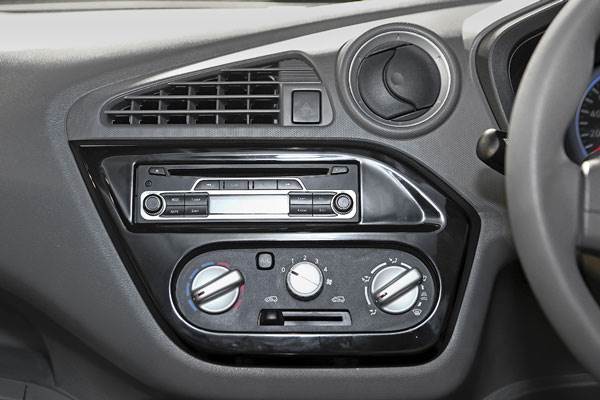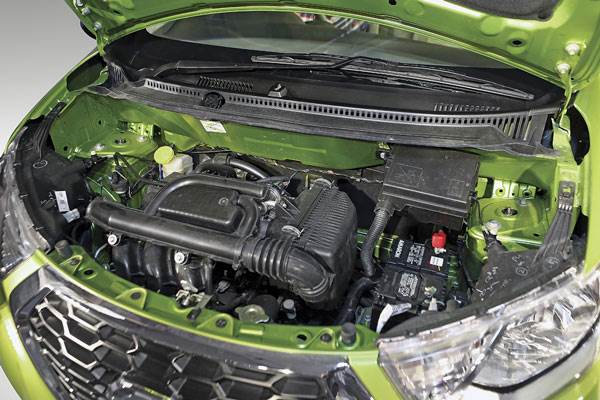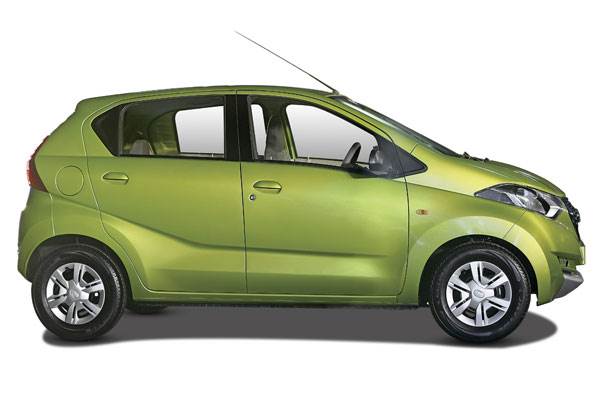Datsun, Nissan’s sister brand, has been in India for a little over two years now. But in this span of time, the country’s response to the brand can be best described as lukewarm. This time around though, Datsun is leaving no stone unturned with its third offering, the Redigo, its entry-level hatchback. It is determined to take the fight to the yet undisputed segment champion, the Maruti Alto, with a product that is better value, better specified and better engineered.
The hatchback recently made its global debut in New Delhi, and is slated to reach showrooms in June 7, 2016 with bookings currently open against a downpayment of Rs 5,000. The Redigo is expected to come at a killer price of around Rs 2.5 lakh (ex-showroom, Delhi) for the base variant, and Datsun also promises that the car will bear the lowest cost of ownership in its segment. In theory, this should make the baby Datsun cheaper to own than Maruti’s stalwart. The big USP on this car though is that it looks a lot more expensive than its price suggests. Whether the Redigo will be as big a success as Datsun hopes it to be is a question only time can answer. So, here’s all you need to know about the car before it hits our roads.
What is it?
Seen first as a concept at the 2014 Auto Expo, the production-ready car is extremely close to the original design. This is especially commendable since the budget segment that the Redigo slots into, seldom has a budget for niceties like cutting-edge styling and complex surfaces. Highlights on the exteriors include Datsun’s hexagonal grille, swept-back headlamps and the well-defined character line that sweeps up towards the rear.
The Redigo shares its CMF-A (Common Module Family) skeleton with the extremely popular Renault Kwid and that gives it a huge advantage. Its low cost can be greatly attributed to the fact that the Kwid and Redigo are almost 100 percent locally manufactured (actually 98 percent). Besides their basic framework, the Redigo and the Kwid also share the same 799cc three-cylinder petrol engine and five-speed manual gearbox.
.jpg&c=0&w=700)
However, the two cars represent very different takes in terms of design. The Kwid comes across as a micro SUV with details like squared-off wheel arches and body cladding. The Redigo’s exteriors, on the other hand, take a more sophisticated, urban approach. Datsun calls it an ‘urban crossover’, a car built to take on the daily city grind. This is made evident by the car’s ground clearance of 185mm, which should make easy work of driving the car over our pothole ridden roads. Furthermore, given our cramped city spaces, the Redigo, just 3,430mm long and 1,560mm wide, has a very small footprint, notably smaller than the Kwid. It instead liberates volume with its tall-boy stance and more stand-up seats. Also worth noting that the wheels have been pushed to the extreme corners of the car. While this, in all likelihood, is an attempt to maximise interior space, the short overhangs, as a result, also lend the car a planted look and should impart a fair amount of stability. The stubby bonnet and steeply raked front end too appear to be a bid to max out cabin volume.
What's it like inside?
The styling on the interior looks contrasting plain in comparison with the car’s flamboyant exteriors. The design is clean, crisp and confident, and nothing really jars the sensibilities. The chunky steering looks really attractive; there are lots of storage spaces thrown around the dashboard, and though the glovebox itself is a small unit, it comes across as very useful.
The high-set dashboard looks functional and carries similar bits like the air-con vents and controllers from the Go and Go+. The Kwid gave the entry hatchback space a big jolt by offering a touchscreen infotainment system on its top-end variant. However, to keep costs low, Datsun has decided to skip the touchscreen on the Redigo, which instead makes do with a single CD player and a monochrome display. That said, Datsun says it is working on adding the touchscreen to the package later.

Because it uses vertical space so efficiently, you sit relatively high in the hatchback, and this makes all-round visibility quite good. The thin A-pillars aid the view out for the driver, the seats up front get integrated headrests and do a decent job of accommodating drivers of all sizes. Also, while headroom is ample, taller drivers might be left wanting for kneeroom.
At the rear, the kneeroom is at a premium too; it's just about adequate for passengers of average Indian height. The tall cabin makes way for adequate headroom, but the high window-line and small rear window take away the sense of space from what is otherwise a decently sized cabin. The front seats too impede the view outside for rear passengers, adding to the feeling of being hemmed in. The seats are flat with no contours, and this makes them not as comfy as they could have been.

As can be expected, plastics used in the cabin don't have a quality feel, the door pads are thin and lack recesses for holding bottles, and the windscreen gets a single wiper. Yet, given the price point of this car, buyers are likely to overlook nitty gritties such as these, because in all, the car looks and feels decently packaged for its segment. Boot space too is decent at 220 litres, which though bigger than the 160 litres available in the Alto 800, is down on the 300 litres offered by the Kwid. Equipment-wise too, the Redigo comes with features on par with the segment. You get air-conditioning, front power windows on higher variants, and a driver side airbag on the top variant. Like on its rivals, there is no ABS offered. The Redigo runs on 13-inch steel wheels with plastic covers; alloys at this price would be an extravagance.
What engines does it get?
The Redigo uses the same engine and gearbox as the Kwid and Nissan says it has made a few significant steps forward on the unit. Outputs from the three-cylinder motor are expected to remain unchanged at 54hp and 72Nm of pulling power. While the numbers may not sound impressive, the Redigo's weight of just 645kg is even lighter than that of the 670kg Kwid. This should make the Datsun a wee bit sprightlier than its Renault counterpart, and importantly, more fuel efficient. From our experience with the Renault Kwid, we know that the motor is relatively smooth and silent at speed. Hopefully, the engineers would have sorted the engine’s jerkiness, which was evident in the Kwid. The five-speed gearbox transfers power to the front wheels. In future, a more powerful 1.0-litre engine and an affordable automatic AMT (Automated Manual Transmission) gearbox are also likely to make it into the Redigo, but much after the car’s launch.

Should I buy one?
Given the Redigo’s expected starting price of Rs 2.5 lakh, Nissan will look to position its offering below the Renault Kwid. If it succeeds with its pricing strategy, the Datsun will undercut not only the Kwid, but also other competitors to become one of the most affordable cars available in India. And that's likely to get some attention. As with other Datsuns, the car is likely to be well engineered, efficient and fun to drive. After a couple of launches that haven't really taken the brand forward, this just could be its first mass market success.

.jpg&w=700&c=1)
.jpg&w=700&c=1)

.jpg&w=700&c=1)


Comments
Member Login
Personal Details
No comments yet. Be the first to comment.